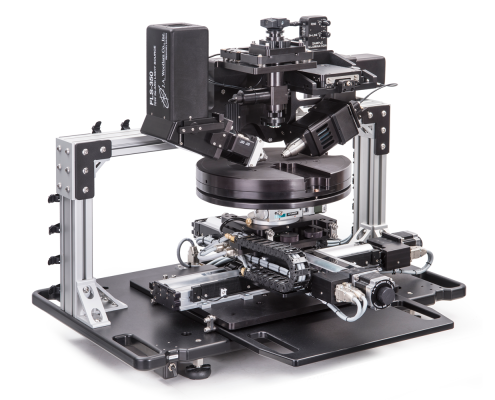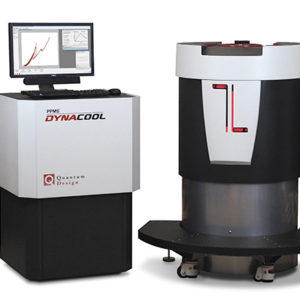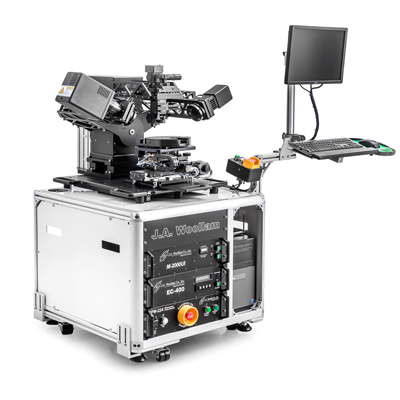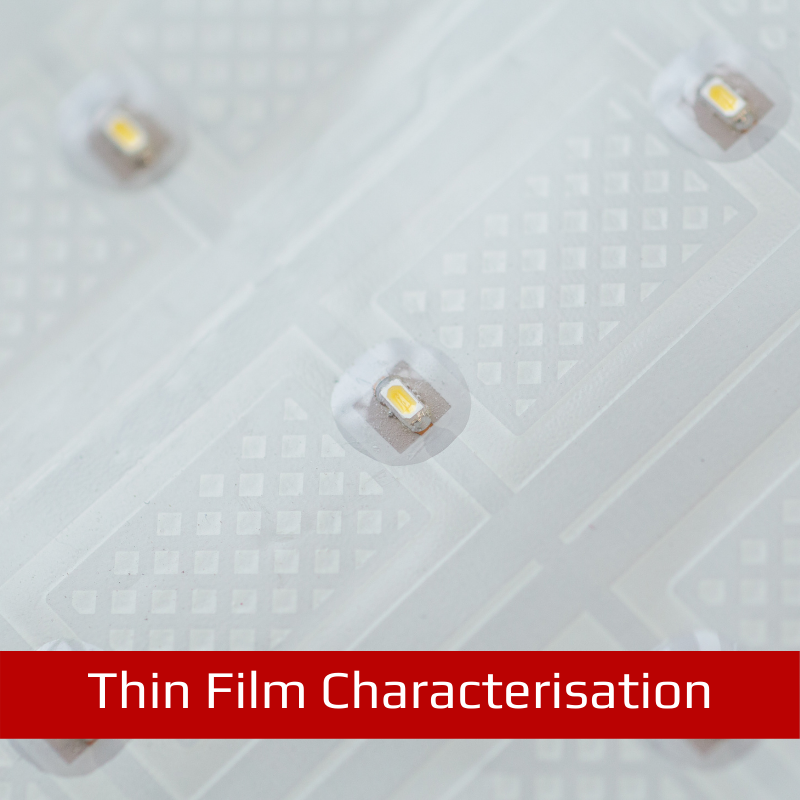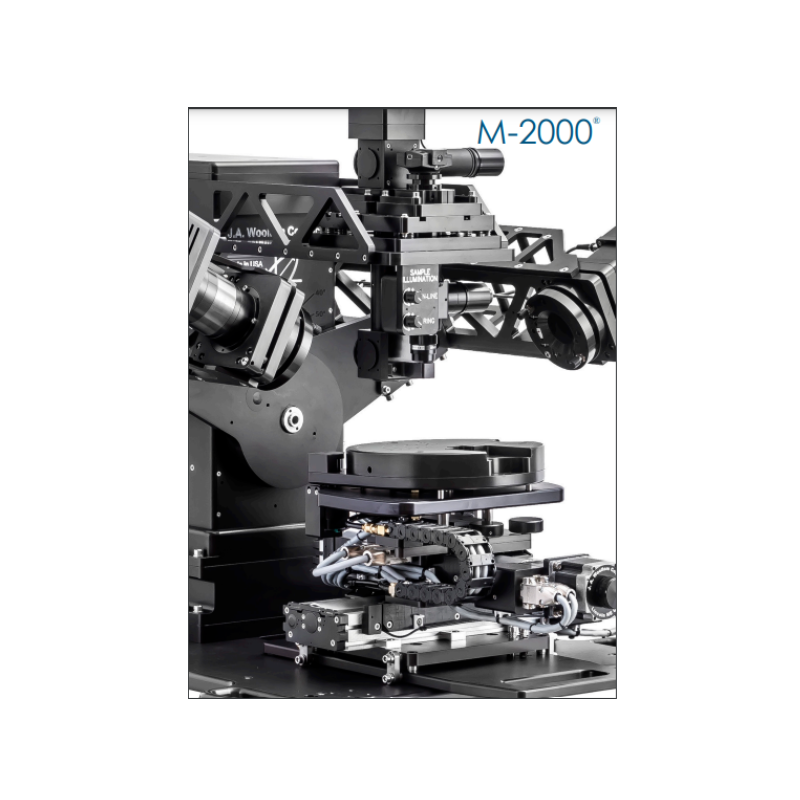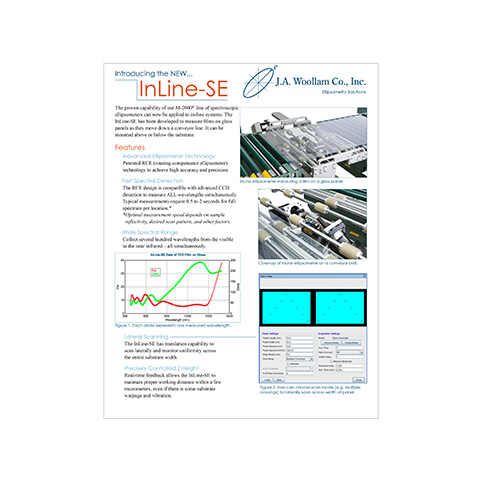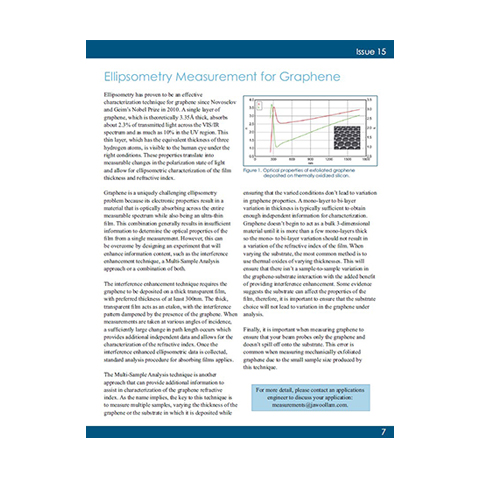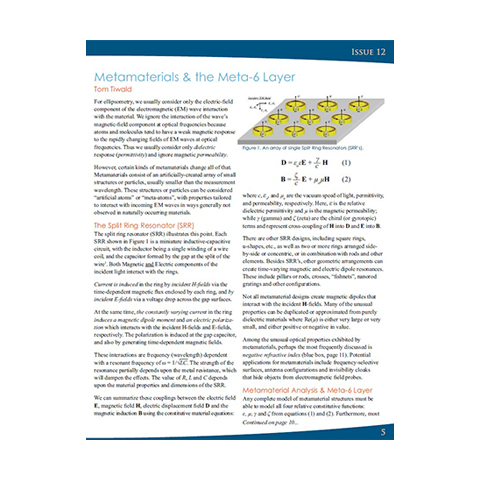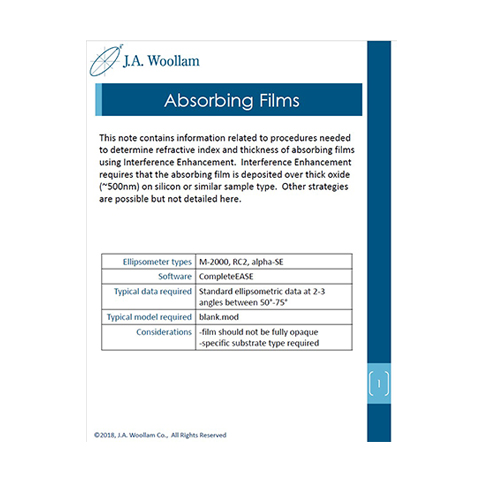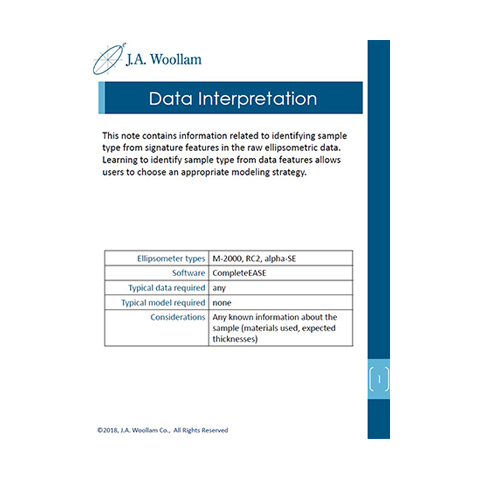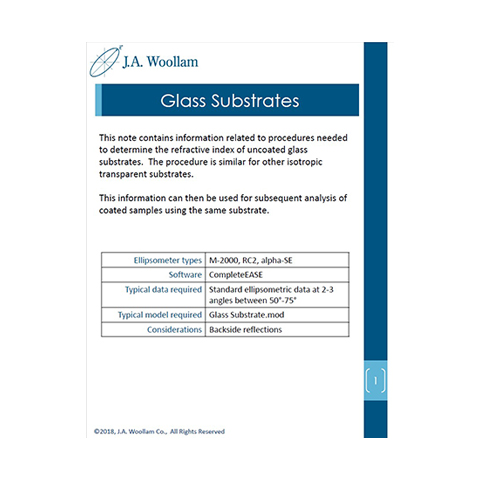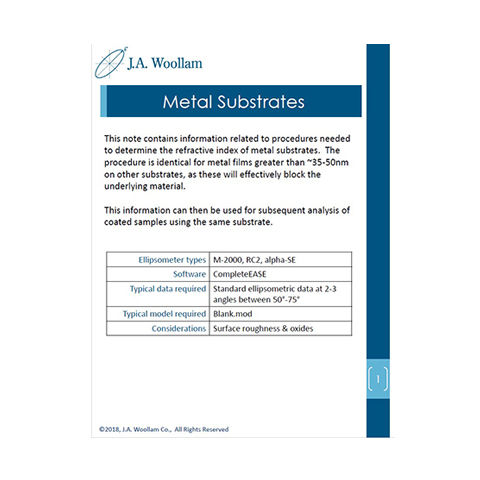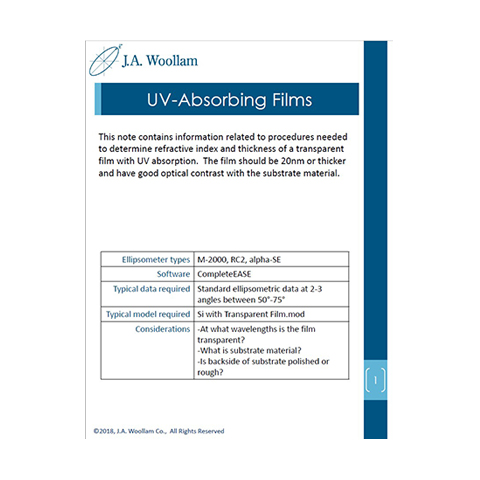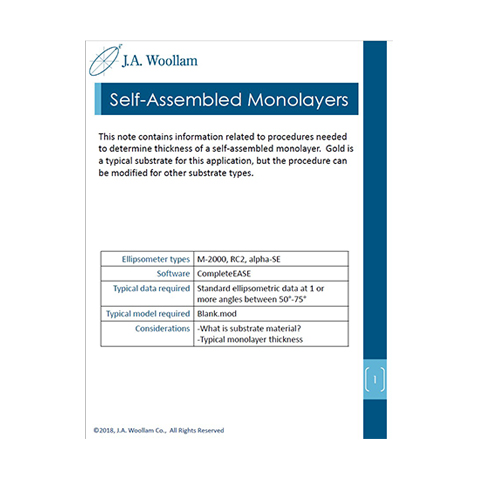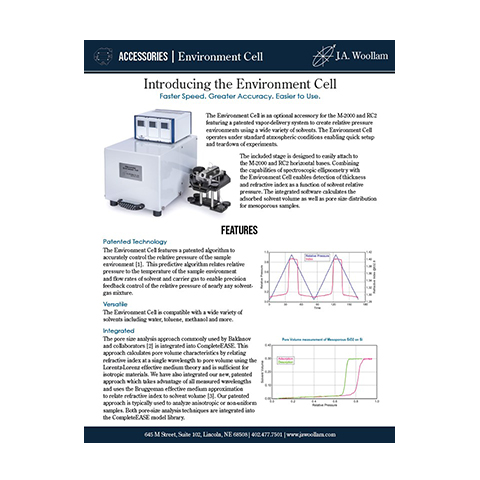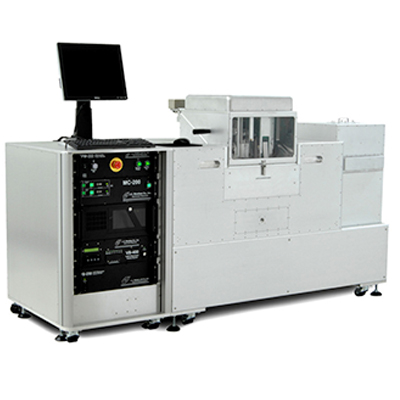- Features
- Models
- Videos
- Downloads
- Applications
- Related Products
- Contact
- Back To Spectroscopy
- Back To Optics
- Back To Hyperspectral
- Back To Cameras
- Back To X-Ray
- Back To Light Measurement
- Back To Characterisation
- Back To Electron Microscopy
- Back To Magnetometry
- Back To Ellipsometers
- Back To Cryogenics
- Back To Lake Shore
J.A. Woollam M2000 Spectroscopic Ellipsometer
Ellipsometer for thin film characterisation
The M-2000 line of spectroscopic ellipsometers is engineered to meet the diverse demands of thin film characterisation. An advanced optical design, wide spectral range, and fast data acquisition combine in an extremely powerful and versatile tool.
The M-2000 delivers both speed and accuracy. J.A. Woollam’s patented RCE technology combines Rotating Compensator Ellipsometry with high-speed CCD detection to collect the entire spectrum (hundreds of wavelengths) in a fraction of a second with a wide array of configurations.

The M-2000 is the first ellipsometer to truly excel at everything from in-situ monitoring and process control to large-area uniformity mapping and general purpose thin film characterisation. No other ellipsometer technology acquires a full spectrum faster.
FEATURES
- Advanced Ellipsometer Technology
- The M-2000 uses the Woollam patented RCE (rotating compensator ellipsometer) technology to achieve high accuracy and precision
- Fast Spectral Detection
- The RCE design is compatible with advanced, proven CCD detection to measure ALL wavelengths simultaneously
- Wide Spectral Range
- Collect over 700 wavelengths from the ultraviolet to the near infrared – all simultaneously
- Flexible System Integration
- With modular optical design, the M-2000 is suited for direct attachment to your process chamber or configured on any of Woollam’s table-top bases
- Accuracy
- Advanced design ensures accurate ellipsometry measurements for any sample.
MODELS
The horizontal M-2000 system offers wide range of options like large area mapping, liquid cells, and heat stages.
Ideal for general use and large samples.
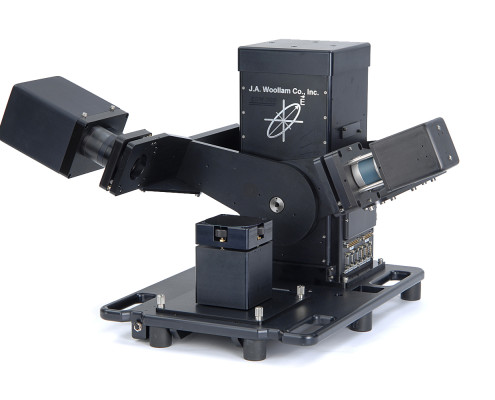
The vertical M-2000 system offers wide angle range and flexibility.
Independent control of sample and detector angle for diverse reflection or transmission measurements.
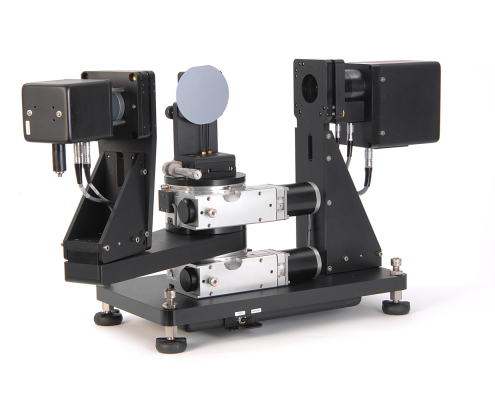
The fixed angle M-2000 system offers budget-friendly base option compatible with several accessories (translator size shown: 50×50 mm XY).
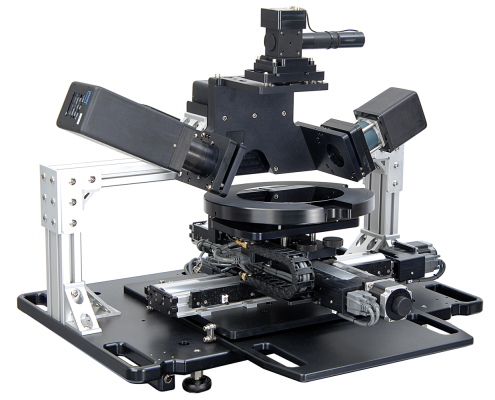
The smallest M-2000 spot size available (25 by 60 microns) for demanding feature sizes.
